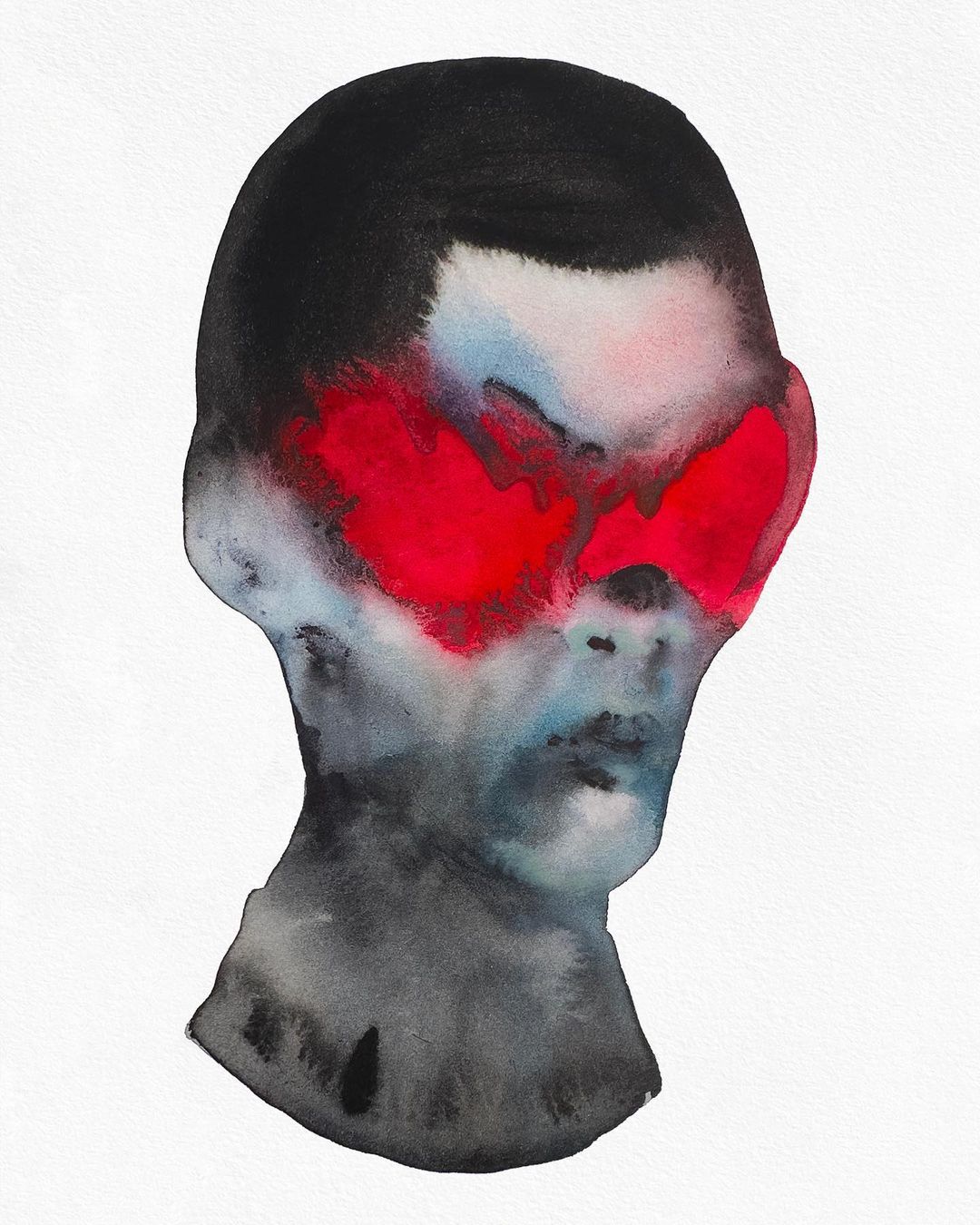
- Date
- 21 SEPTEMBER 2023
- Author
- DAVIDE ANDREATTA
- Image by
- GALERIE PANTHOM
- Categories
- Interviews
Between anonymity and portrait. An interview with Galerie Phantom
A crowd of anonymous yet unique and unforgettable faces, Galerie Phantom is the latest project of art director and designer David Bailey Ross.
Thanks to his distinctive treatment of the pictorial matter, his watercolored heads always appear to be on the verge of abstraction: the human figure can hardly contain the virtual forces inhabiting it and color is one privileged way to set these flows free.
Anonymity and individuality are not opposite, but rather a mirroring of different timelines.



Good morning David, and thanks for joining us! One could say that we come from a long tradition of portraits and that solely might be a sufficient reason behind the choice of your subject, the human head, but I still have to ask: what sparked your interest in the head?
Somehow I’ve always been drawn to representations of the head in art and design, not so much traditional portraiture but sculpture and photography are strong influences. I am ultimately interested in people and how they express themselves or communicate through their appearance whether consciously or not. I live in London and every day I see so many different types of people it’s fascinating to me. Social media adds another window of visual information and I try to soak everything up and put as much as I can back into the heads. If it’s going well the work I produce is my representation of what ia m seeing and feeling at that time.
There are some identifiable influences in your watercolors, going from Clive Baker to the whole BDSM universe to Bacon and youth subcultures; however, what I find particularly interesting in your works is your use of color. What dictates your choices when it comes to that?
Sourcing, mixing and preparing palettes of colors is a big part of my process. I'm very drawn to color in general and always on the lookout for something new to experiment with. When I actually get down to painting it’s quite instinctive and unplanned. I like to keep things loose and allow the flow of the paint to guide the outcome.
Connected to the previous question: many of your heads present sealed lips, whereas others are screaming. And yet, all of them somehow appear to be shrieking: I believe this has to do with your treatment of the pictorial matter, with your creation of a series of layers where each one of them seems to be almost attempting an escape from the one covering it. I’m not, of course, suggesting that there’s something (like a subject) trapped inside these heads begging to be released, but rather that painting itself is trying to flee materiality. Another way of saying this is by suggesting that your heads are on the verge of abstraction: were you at one point or another interested in abstract painting?
It was around 2019 when I first started painting with purpose. I rented a small studio and began experimenting with different mediums and these initial studies were abstract.
The heads began to appear subconsciously and I found I was still able to imbue a certain amount of abstraction into the textures and colors using the wet-on-wet watercolor technique. On the verge of abstraction is a good way of putting it. The whole process of working wet on wet with watercolor is quite risky and a lot is left to chance. I am interested in how the materials and process affect the outcome. I don’t want to see too much of my hand in the work. The most successful works for me are ones that feel like pools of color have converged by chance to form an eye or mouth or the entire head.

Do you keep any visual reference during creation or does it all happen within your head? I’ll rephrase: do these heads belong to specific characters?
I do use references, these can be sourced from books, films or magazines that I have manipulated in some way. I reference the light, shadow or pose rather than trying to convey a specific character. I’m more interested in expressing a mood, emotion or character type.
Back to the influences discussed before, there is a fascinating tension in BDSM which is one between anonymity and role assignation. On one side the assignation of roles presupposes recognizability, on the other the erasure of identities pushes in the opposite direction. It’s like roles were assigned in anonymity (which doesn’t mean blindly): besides the aesthetic reference, do you see any comparison between BDSM dynamics and your creative process?
It is this idea of anonymity and role assignment that initially interested me in the BDSM gears and I suppose that idea does carry through to other works. I want to have some connection or understanding of the character without it being a particular person. Sometimes this can be about stripping back the surface or removing features to bring focus onto the silhouette.



On your IG profile dedicated to the series you keep the grid at 36 posts at all times: what’s the reason behind such a choice?
There is a lot of significance to the number 36 in mathematics and religion but ultimately, for me, it’s about striking a balance. I want a certain amount of curation to my profile and the selection to change often, I think of it like a window display.
How do you see the project evolving?
Right now I am working with a specialist printer to create some print editions and beyond that a gallery exhibition and eventually a book would be great.

Interview by Davide Andreatta
Image courtesy of Galerie Panthom